Set piece situations play a vital role in modern football. That is the reason why practicing corner-kicks and free-kicks has become common. However, there is one set piece situation which often gets overlooked: the kick-off.
More and more sides utilise this set piece as an opportunity to execute their match plan from the first minute. The following tactical analysis will explain the importance of the kick-off as well as examine different kick-off strategies.
Rules of the kick-off
There do exist some myths about the rules concerning a kick-off. To understand all options when kicking off, one needs to take a look at the laws first. Different to throw-ins and indirect free-kicks, “a goal may be scored directly from the kick-off” according to FIFA. This allows teams to shoot with the first touch and thereby surprise the opposition goalkeeper.
But there are other vital rules which define the way a side can kick off.
“The kicker must not touch the ball again until it has touched another player.“ (FIFA)
Therefore, dribbling with the ball is not allowed and an interplay between at least two players is necessary when kicking off.
“All players must be in their own half of the field of play.“ (FIFA)
This rule affects the starting position of each player. Due to this law, one cannot position further up the pitch before the whistle. That differs the kick-off from free-kicks in midfield.
The psychological aspect of the kick-off
The point of time of a kick-off sets the kick-off apart from all other set piece situations. As a team only get a kick-off at the beginning of a match or the second half, or after conceding a goal, kick-offs are executed in psychologically important moments of the game.
Therefore, teams can use the kick-off to demonstrate dominance and self-confidence. It is also possible to unsettle the opposition with a promising attack.
Last but not least, concentration plays a key role when kicking off. Many sides lack concentration within the first minute of a match. One can penalise this by attacking right away. On the other hand, one can avoid missing concentration by allocating clear roles for every player during the own kick-off routine. This forces every player to focus on their task right from the beginning.
Controlling the match right from the start
The most common concept when kicking off is to secure possession. Most teams therefore play back passes to their defenders who have full sight of the pitch. Especially for sides which like to dominate the game in possession, this is a sensible approach. Manchester City for example keep possession in the picture below.
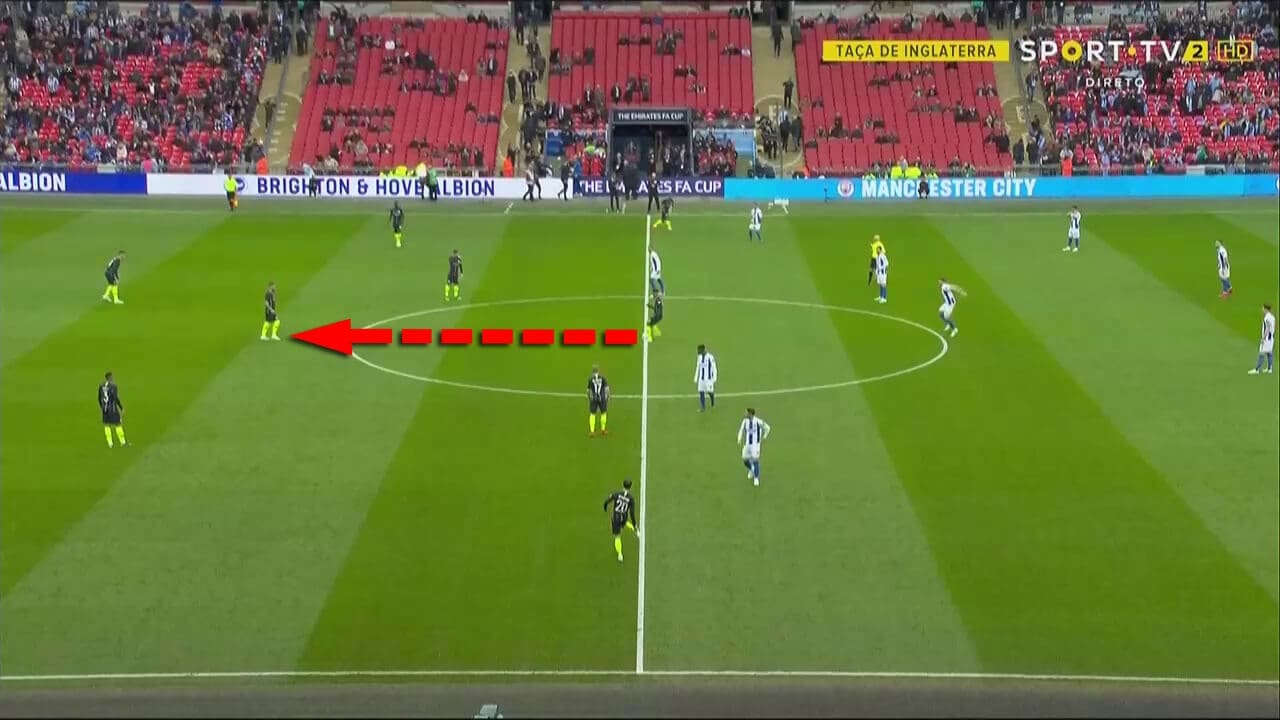
By keeping possession, Pep Guardiola’s side take in their attacking organisation.
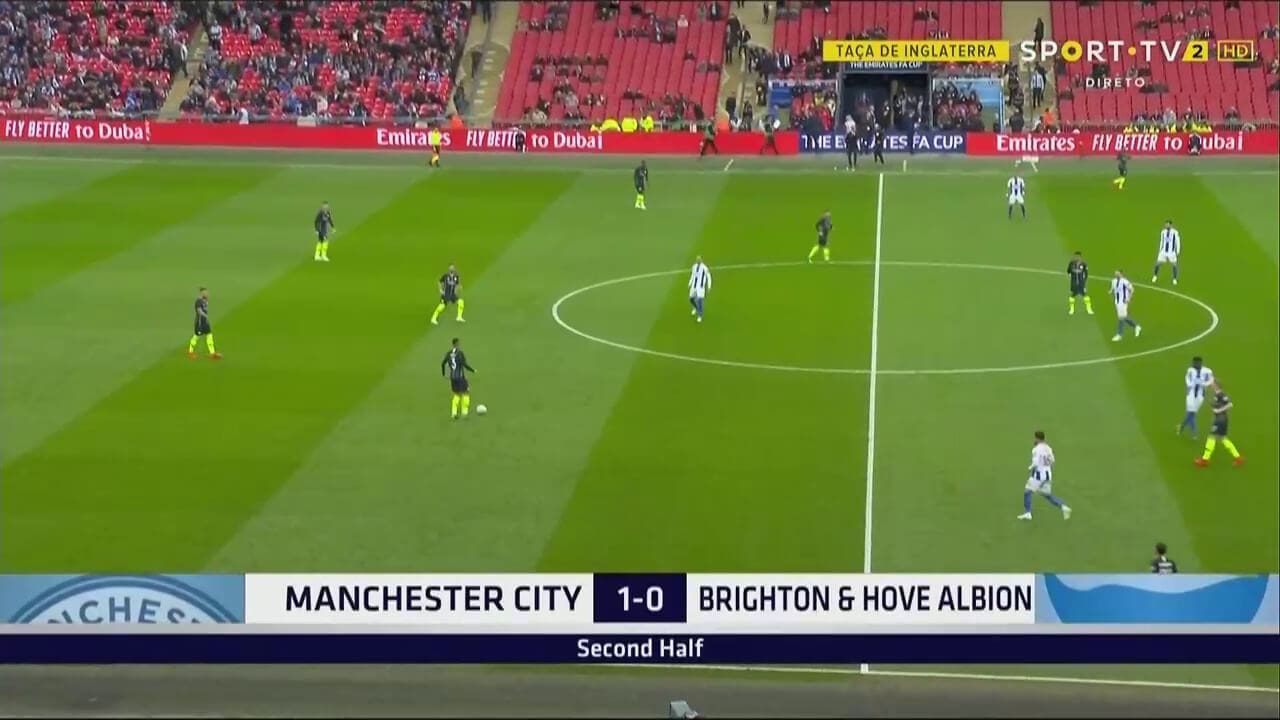
However, this strategy also holds a disadvantage. The opposition can move up the pitch and press the team in possession in their half if they aim at pressing high up the pitch.
The common strategy to keep possession from the start may be a sensible concept for teams who prefer to be in possession. If your side prefer an attacking-minded style of play though, it might be more promising to adapt the kick-off routine to this philosophy.
Attacking from the first second
A more direct strategy when kicking off is to progress up the pitch straight away in order to threaten the opposition goal or to shift into the opposition half with the whole team.
There are different ways of attacking from a kick-off. Firstly, one can overplay the opposition with a long ball. This decreases the risk of losing the ball to opposition attackers or midfielders and being caught in a counter-attack. However, it requires the defensive department to quickly progress up the pitch to win second balls in the middle third.
In Serie A, Sampdoria used a 0-0-10 setup when kicking off.
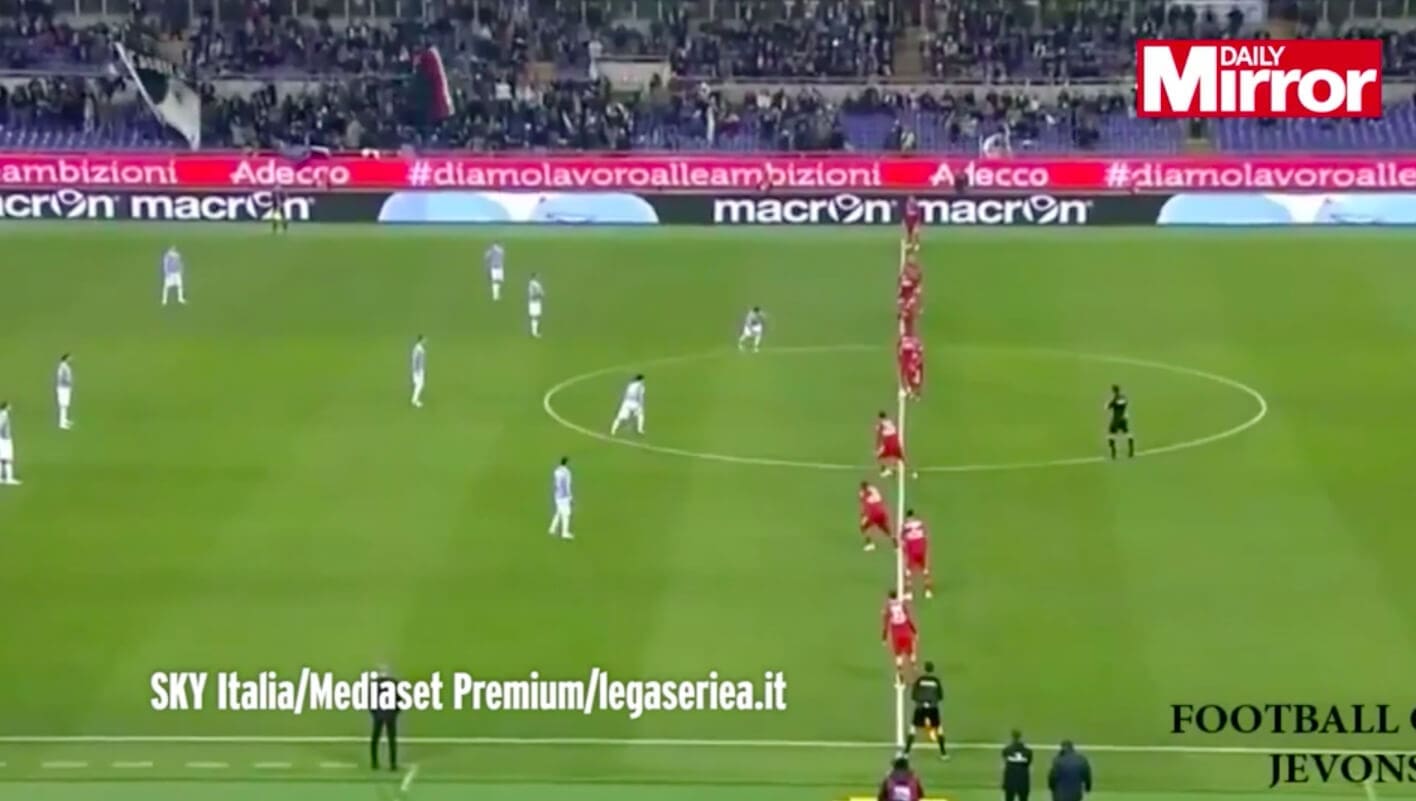
However, some of their players dropped into defensive positions while others moved forward to receive a long ball when the referee blew the whistle. The high positioning of all players was supposed to confuse the opposition.
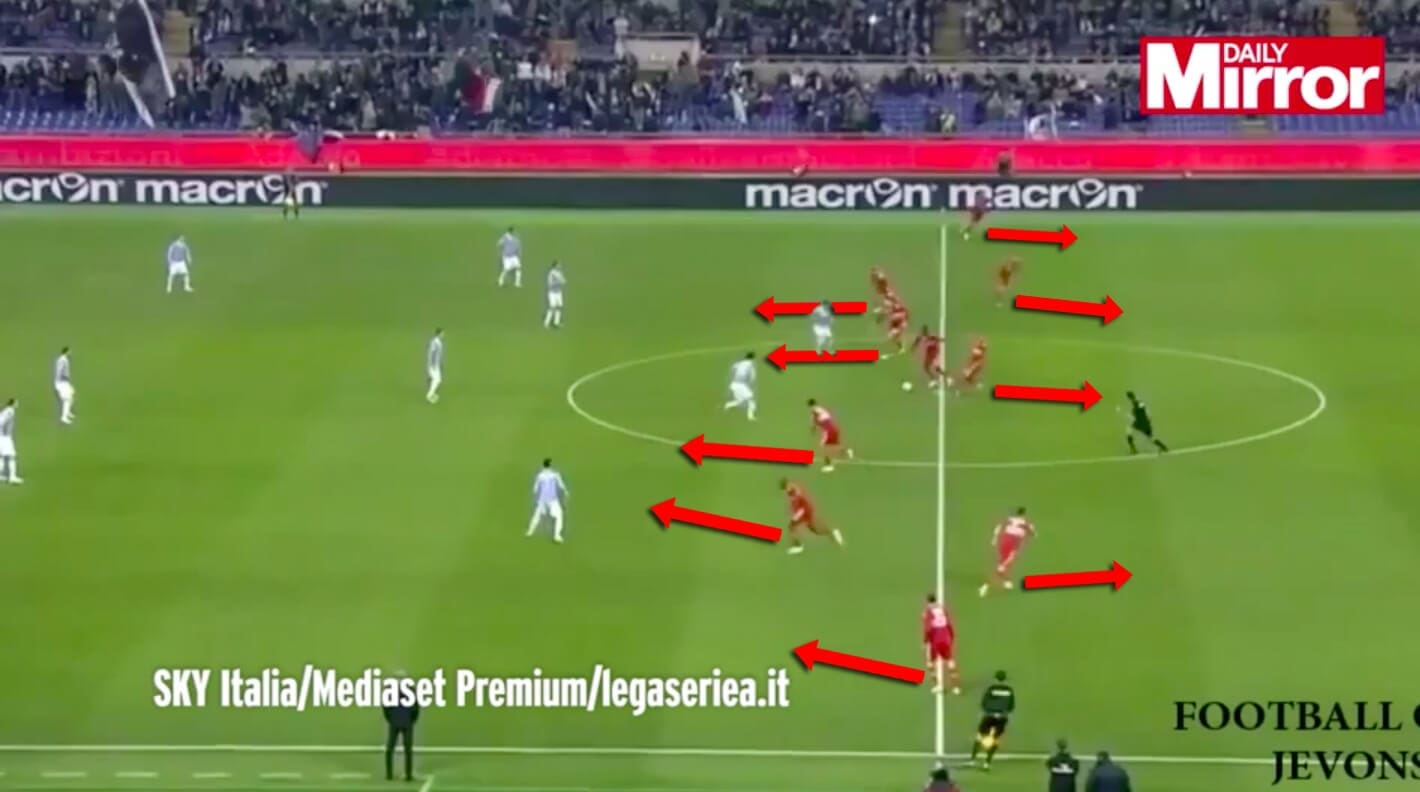
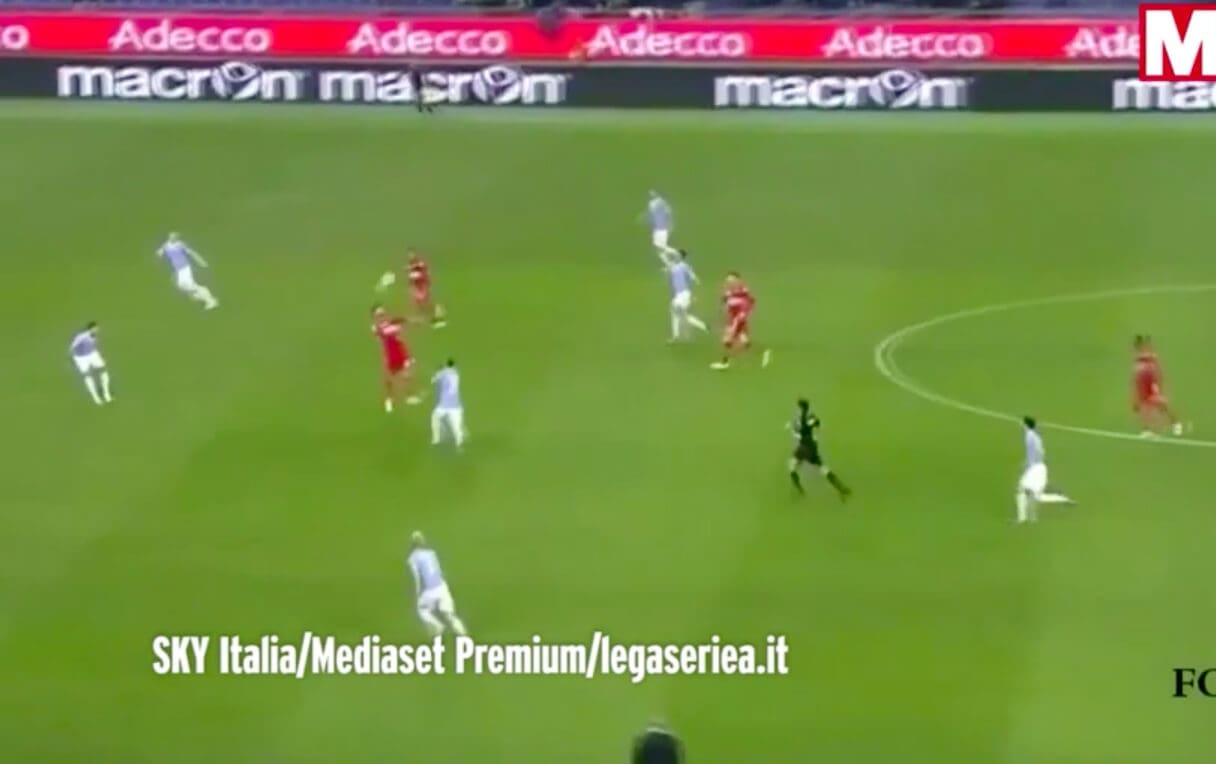
RB Leipzig showed how to successfully score after a long ball kick-off routine.
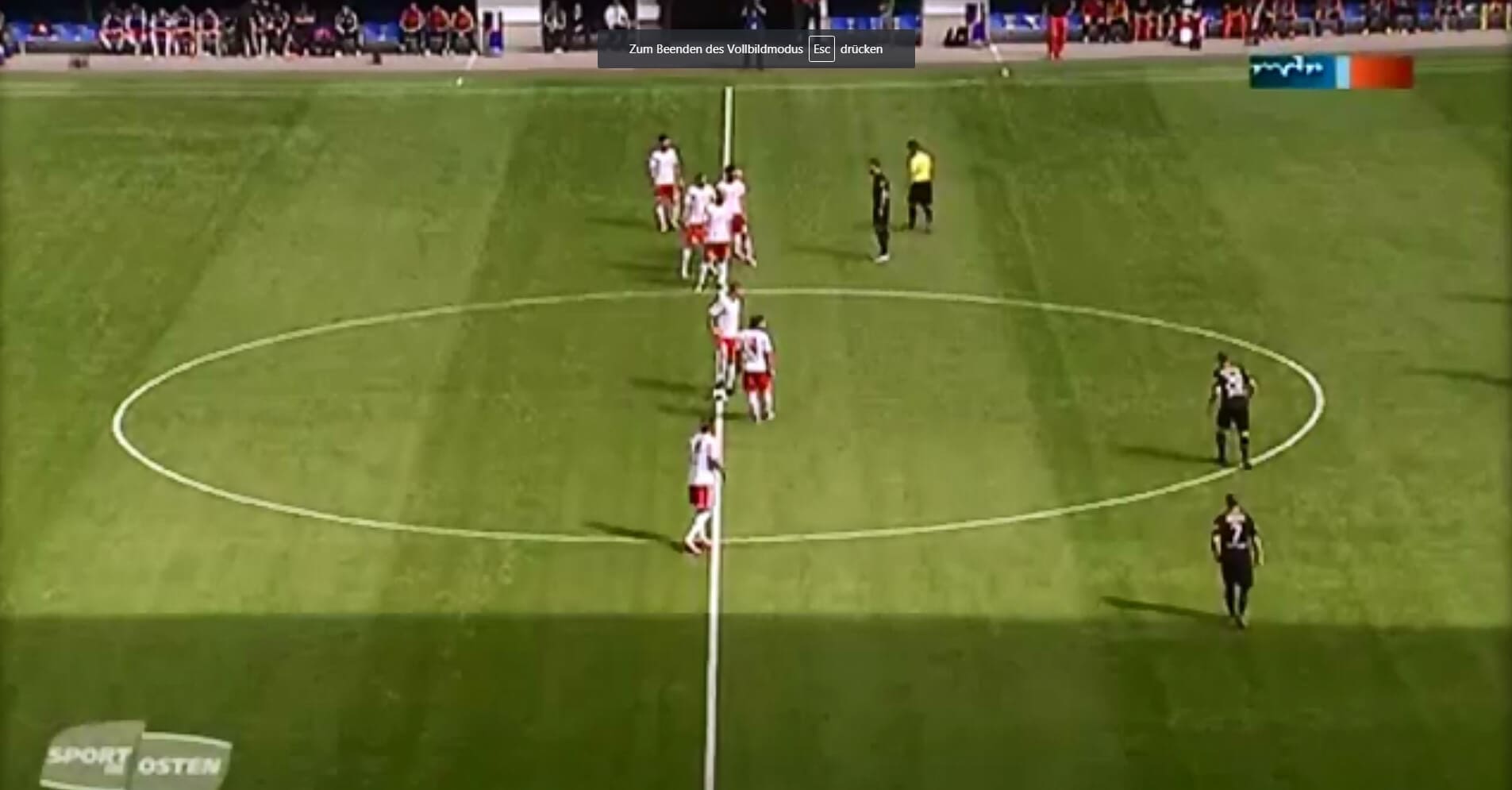
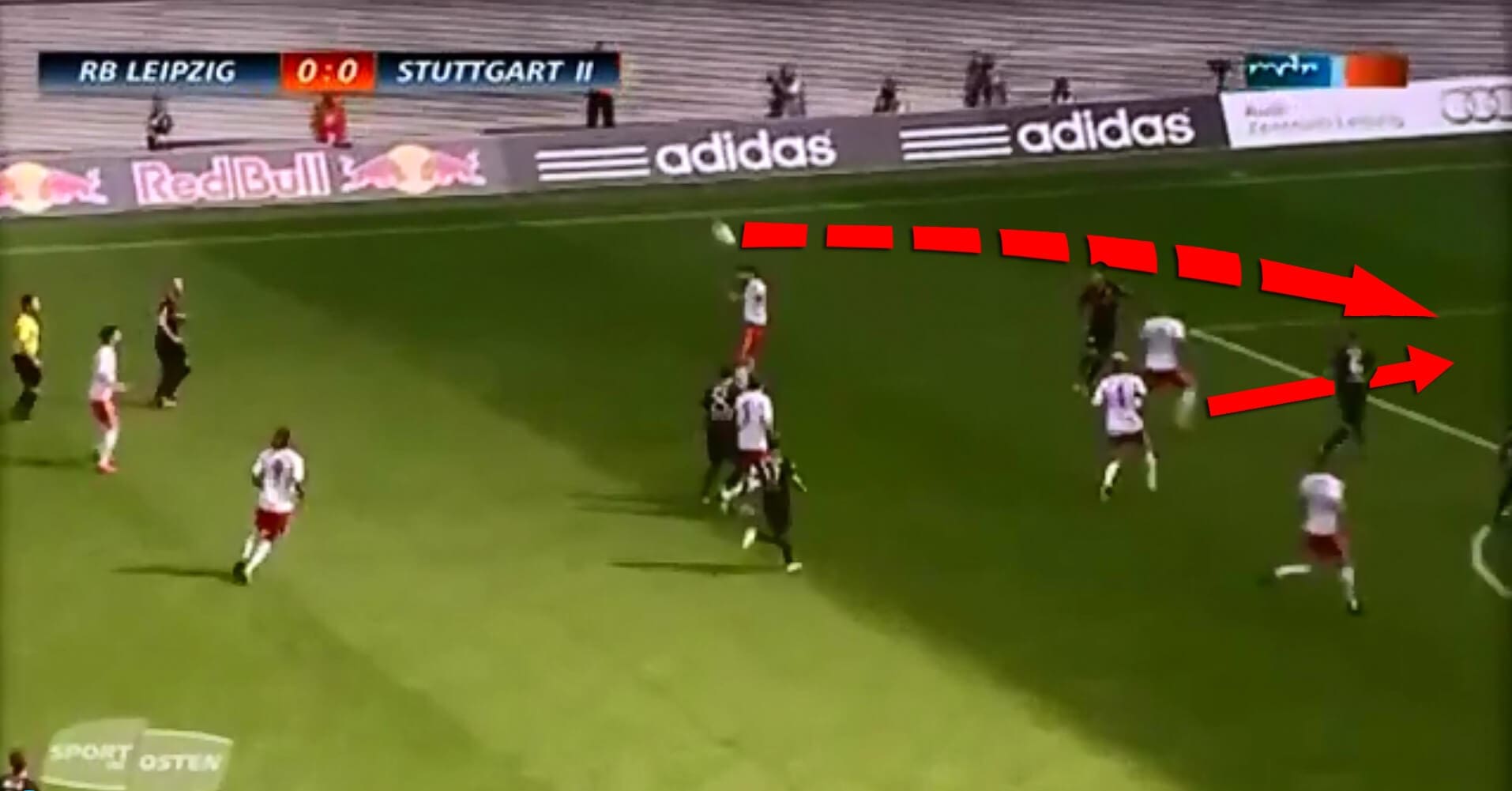
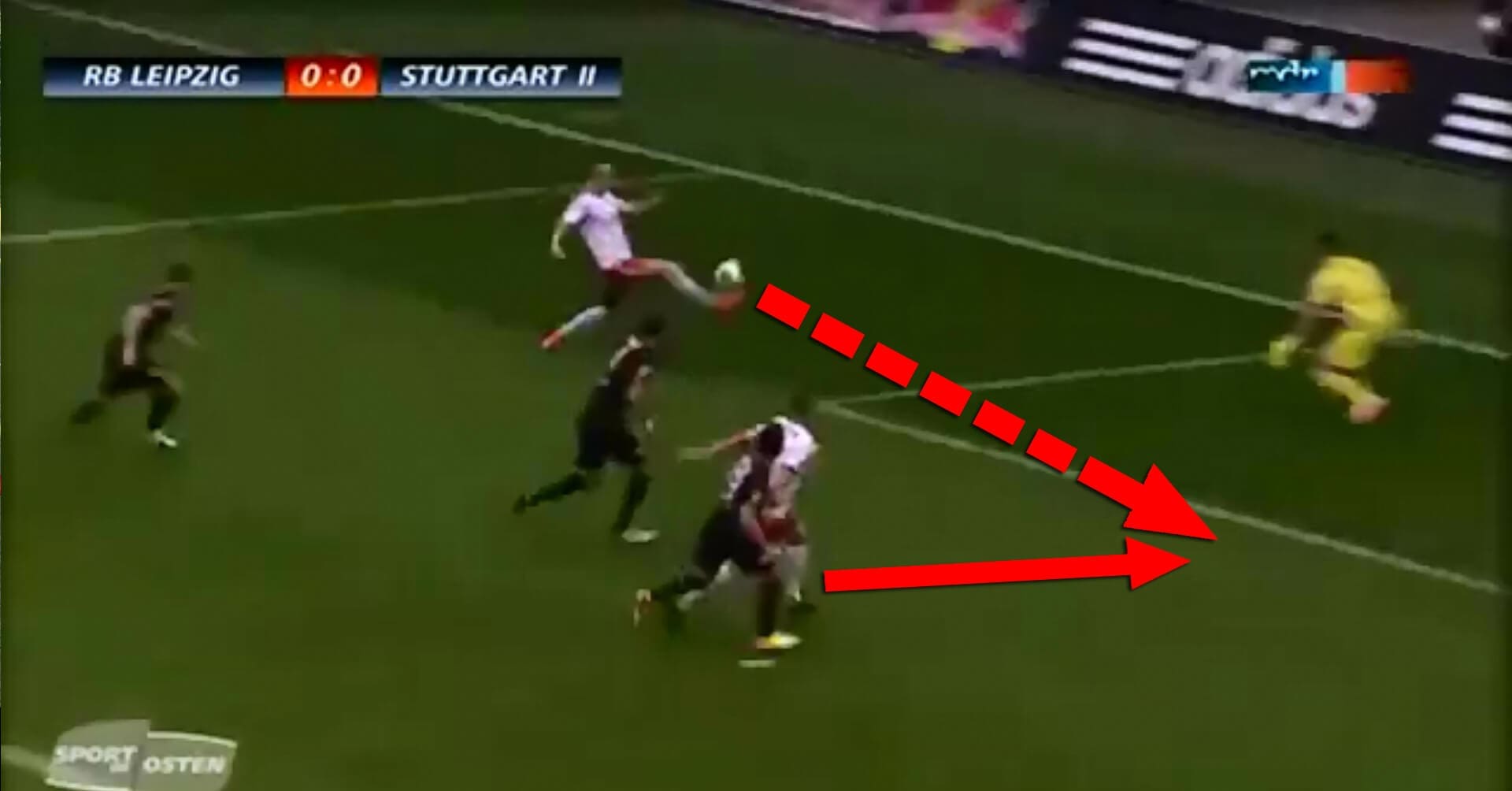
Secondly, it is also possible to use quick combinations on the ground to progress up into the opposition half. This approach entails more risk of being caught by counter-attacks as a pass might get intercepted in the middle third of the pitch. Nevertheless, Bayer Leverkusen once presented a perfectly executed short-pass attacking kick-off resulting in a goal.
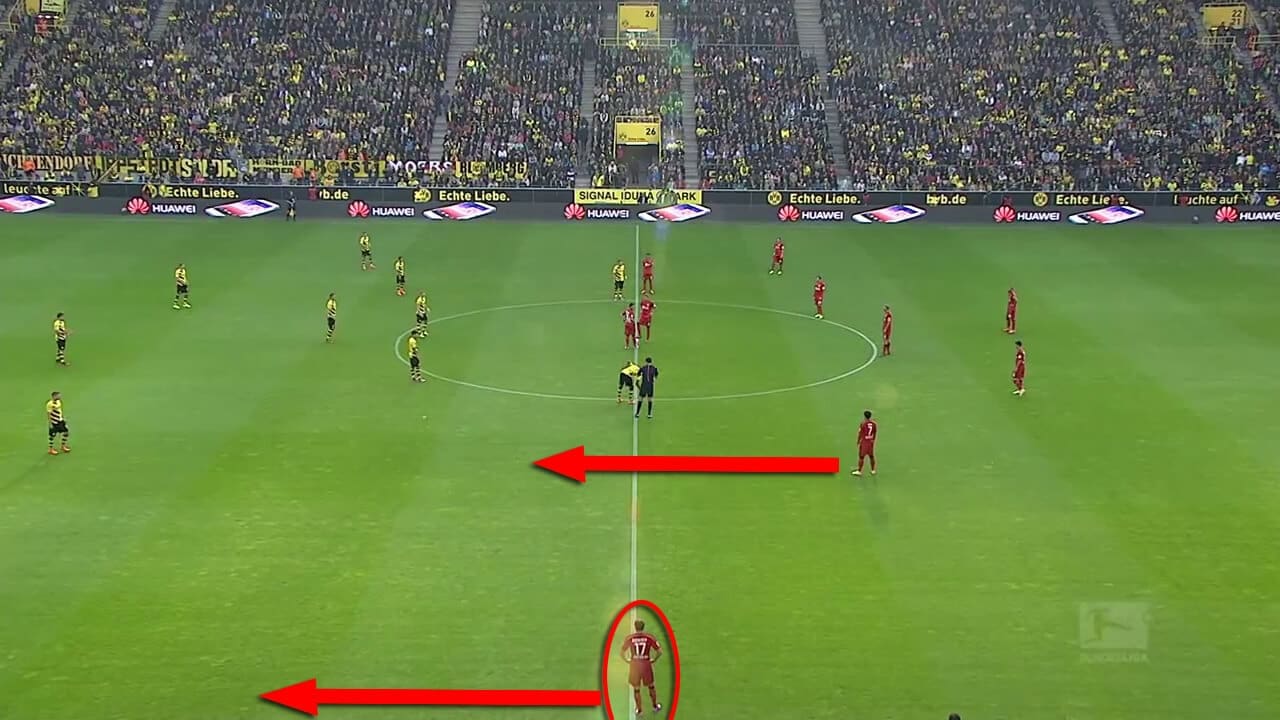
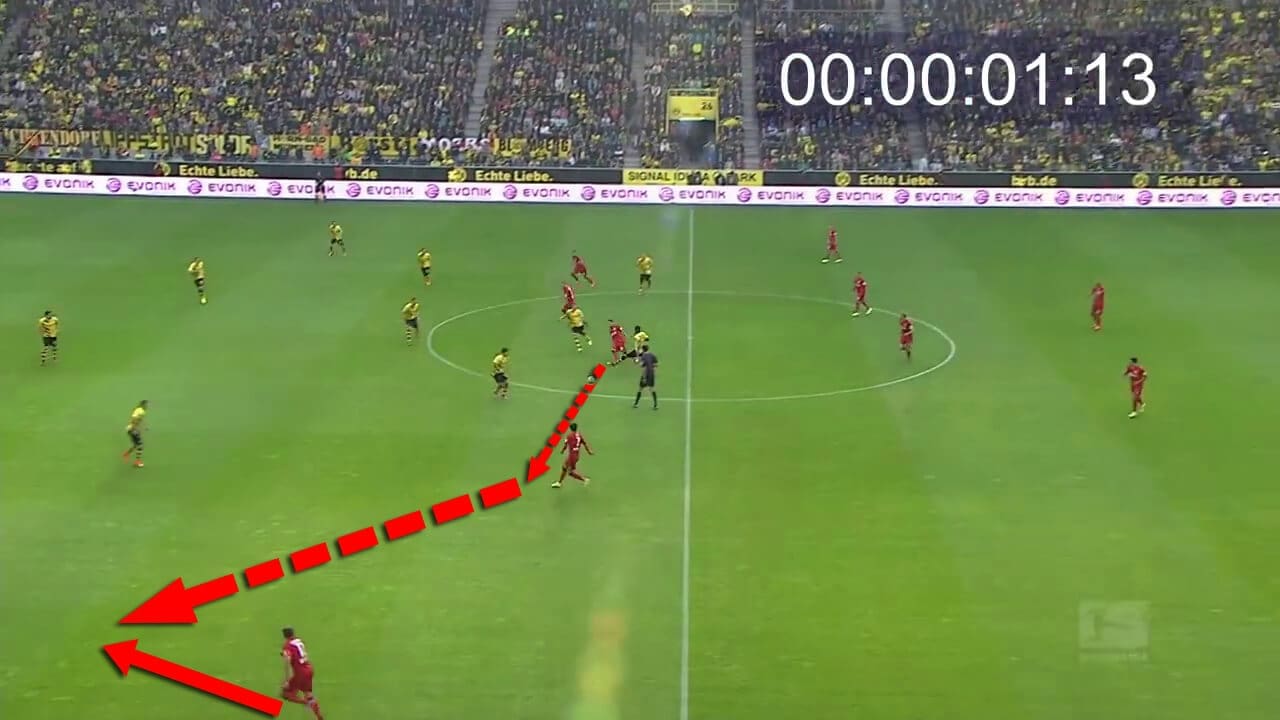
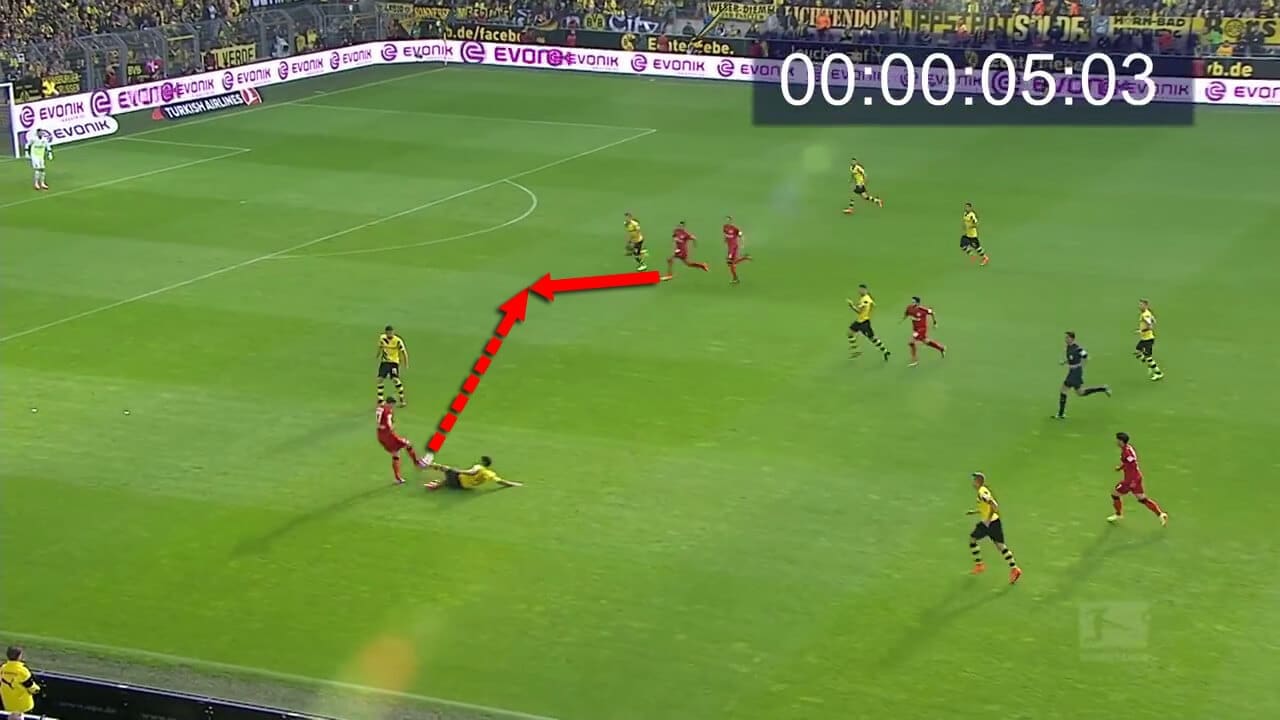
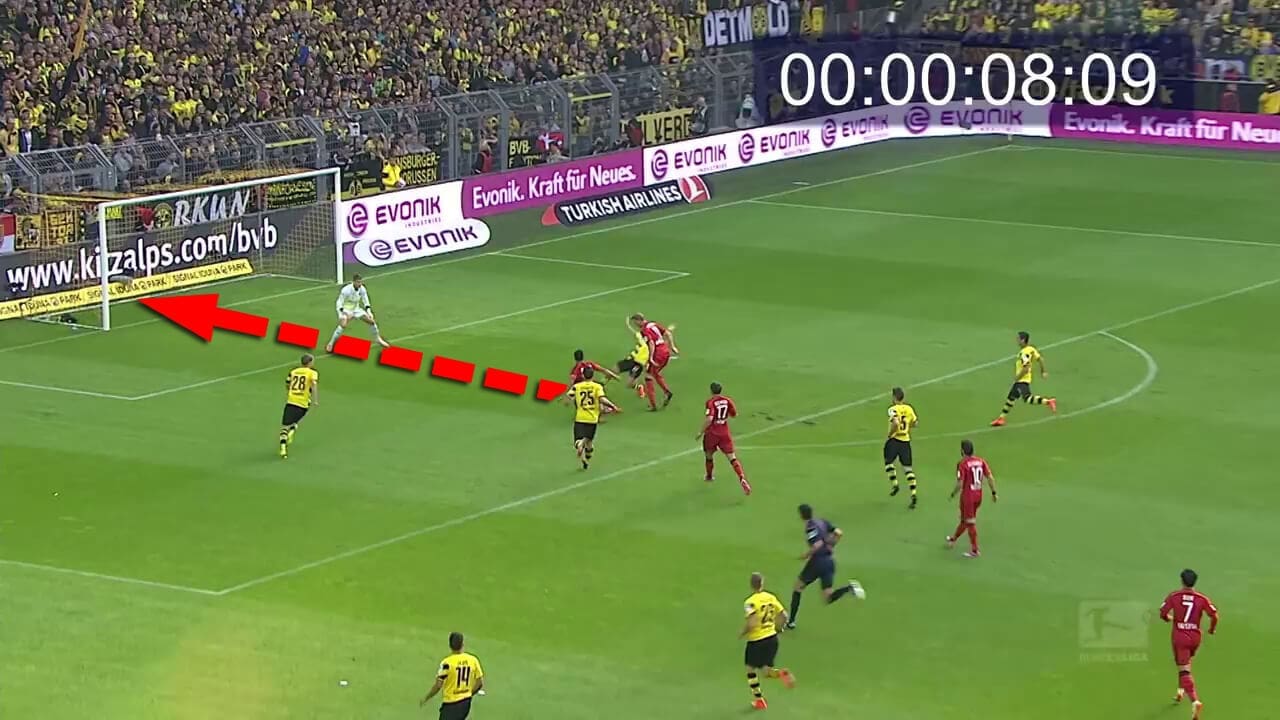
A rather risk-free option is to attack down the wings. Napoli under Sarri, for instance, used to take long balls towards one side of the pitch. Even if Napoli’s attackers cannot control the ball, the distance towards their own goal is very long which decreases the probability of being caught on the break.
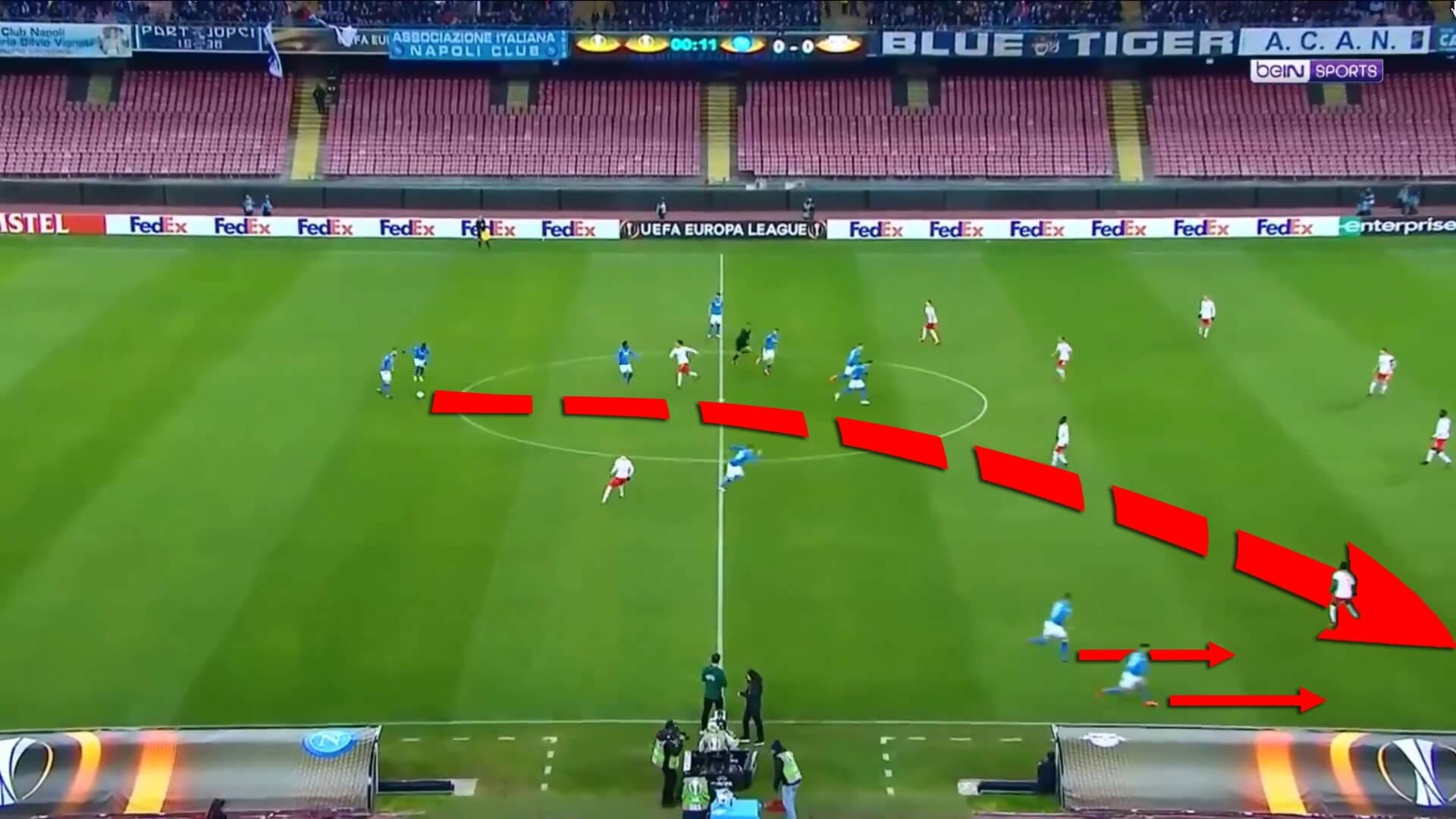
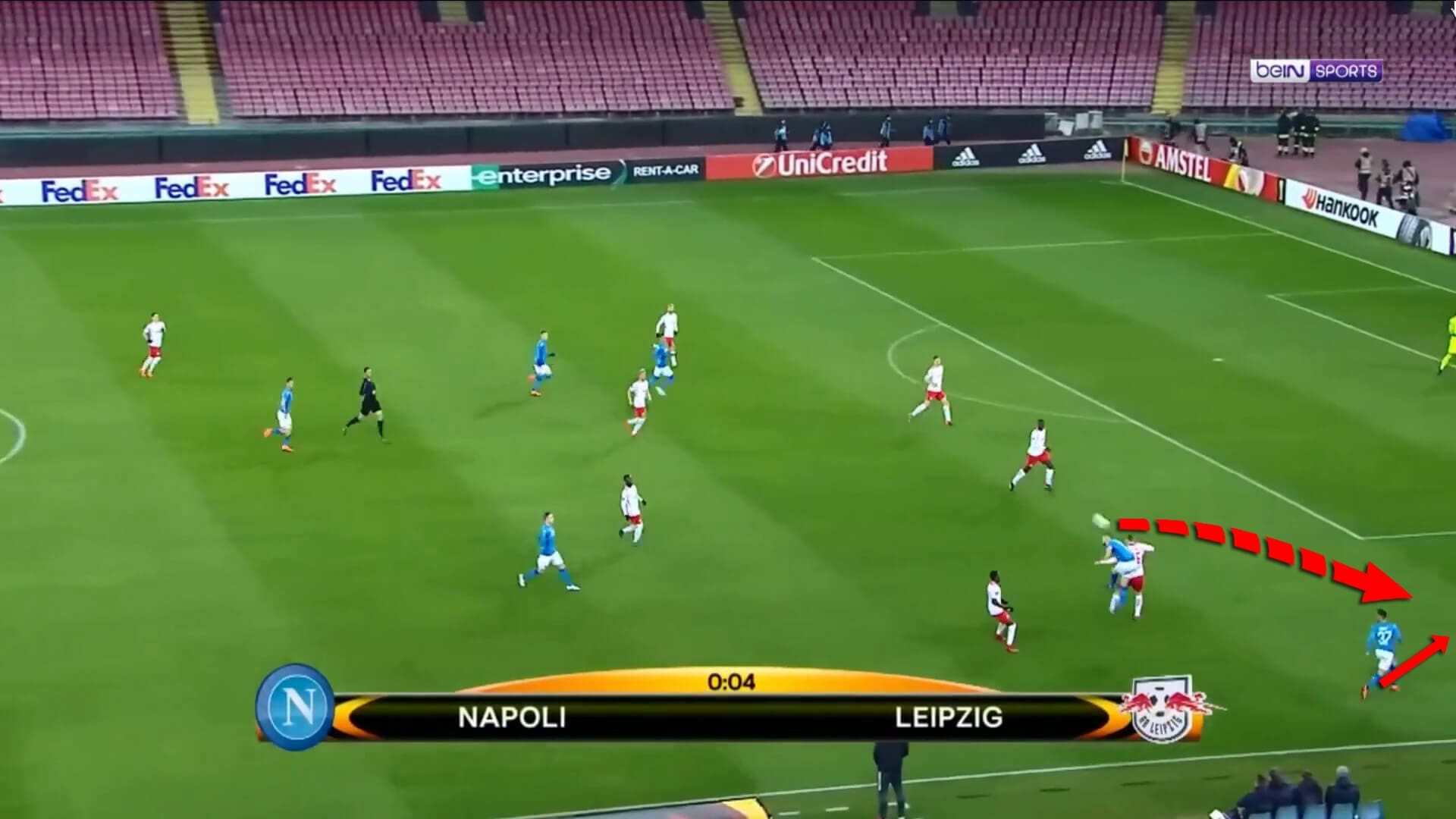
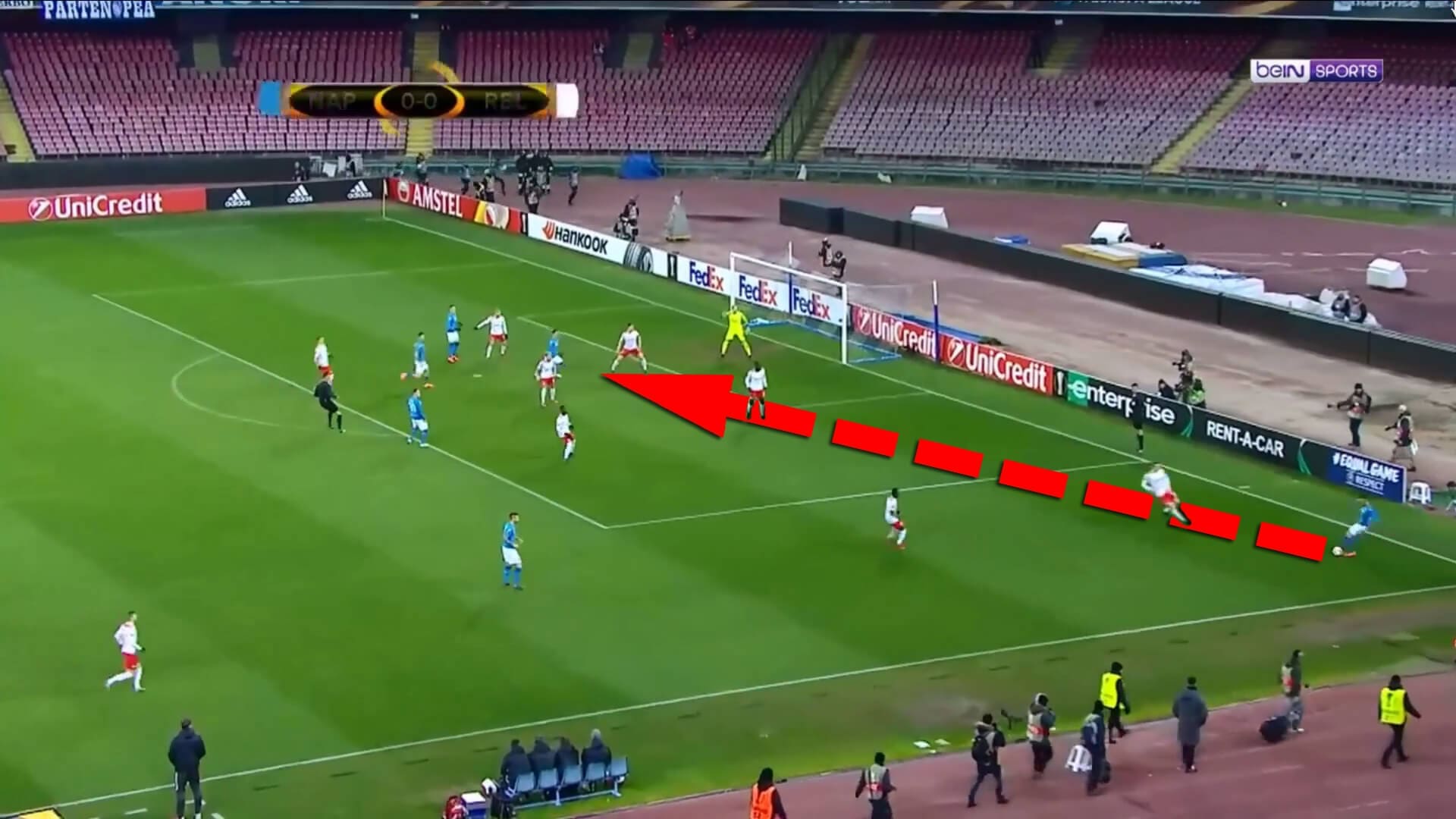
The risk of attacking kick-offs
However, there is also a risk off being defensively disorganised or having numerical inferiority at the back when attacking right away after the kick-off. The disorganisation can be avoided by allocating enough players to cover the attack in the centre as well as in wide areas. Numerical inferiority on the other hand might result from the opposition attackers staying up front.
As a result, the opposition defend with fewer players which creates a numerical superiority in the attack. One might assume that the chance outweighs the risk in this case. One has to utilise the numerical advantage in order to prevent a dangerous counter-attack.
A recent example of how dangerous attacking kick-offs without enough defensive cover can be is West Brom’s kick-off in an EFL match against Leeds United. West Brom started with a chipped ball. As their attacking player lost the aerial duel, Leeds could counter-attack.
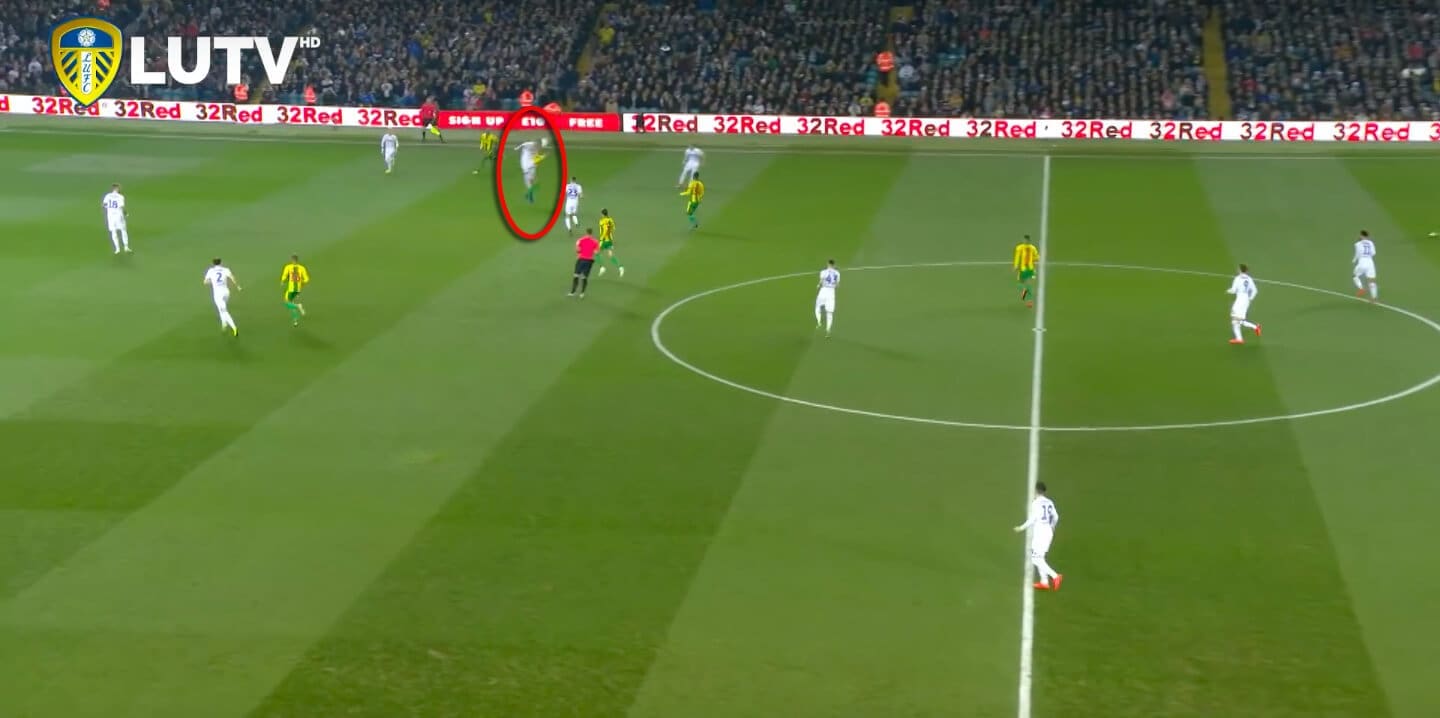
Since West Brom’s midfielders had moved forward but their defenders had not, a gap between midfield and the last line of defence emerged. Leeds used this space for their following counter-attack.
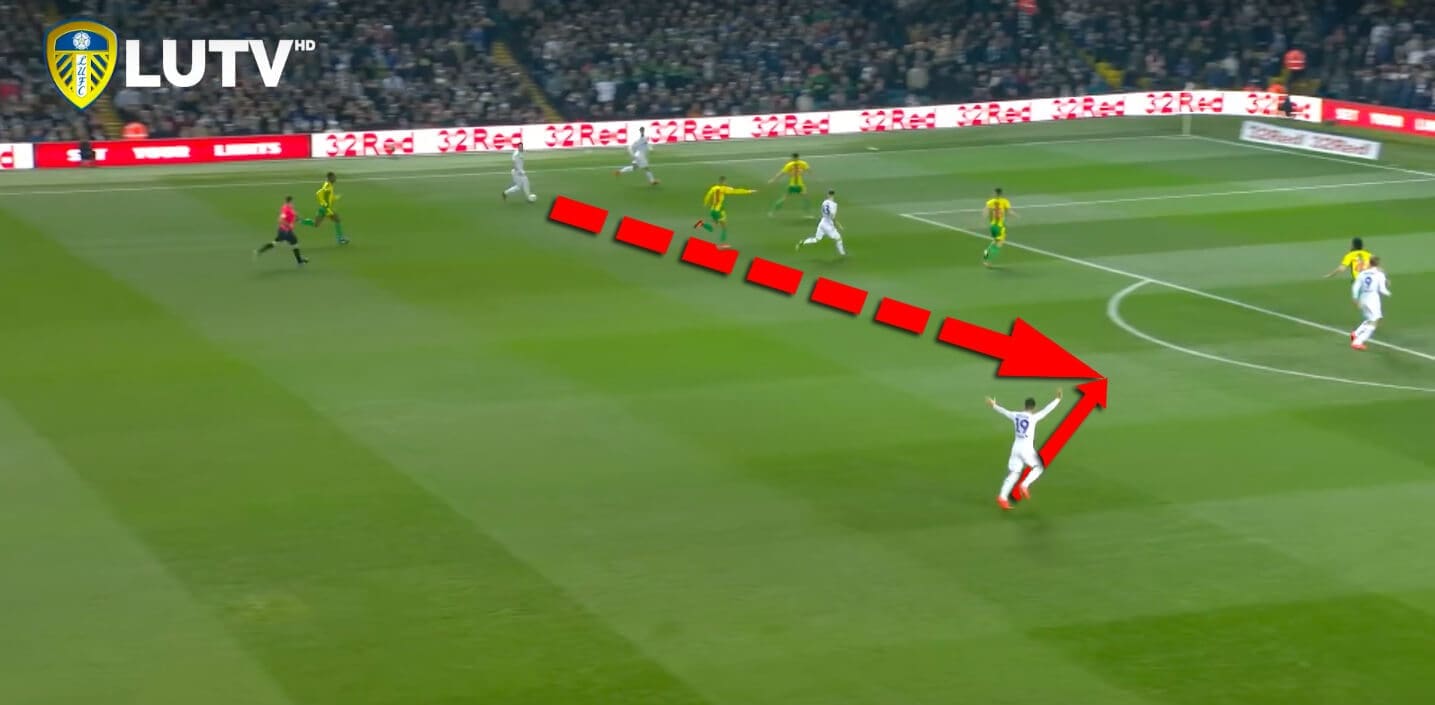
As West Brom only covered their attack with four defenders, Leeds were capable of outplaying their defence and scoring the opening goal.
Unorthodox kick-off varieties
As already explained earlier, players are allowed to score directly from a kick-off. Depending on the position of the opposition goalkeeper, this strategy can be a promising one.
Another innovative variety that Olympique Marseille showed in 2018 resembles rugby. The Ligue 1 team used to hit a long ball leaving the pitch at the sideline and causing a throw-in for the opposition. Marseille immediately shifted forward into the opposition half.
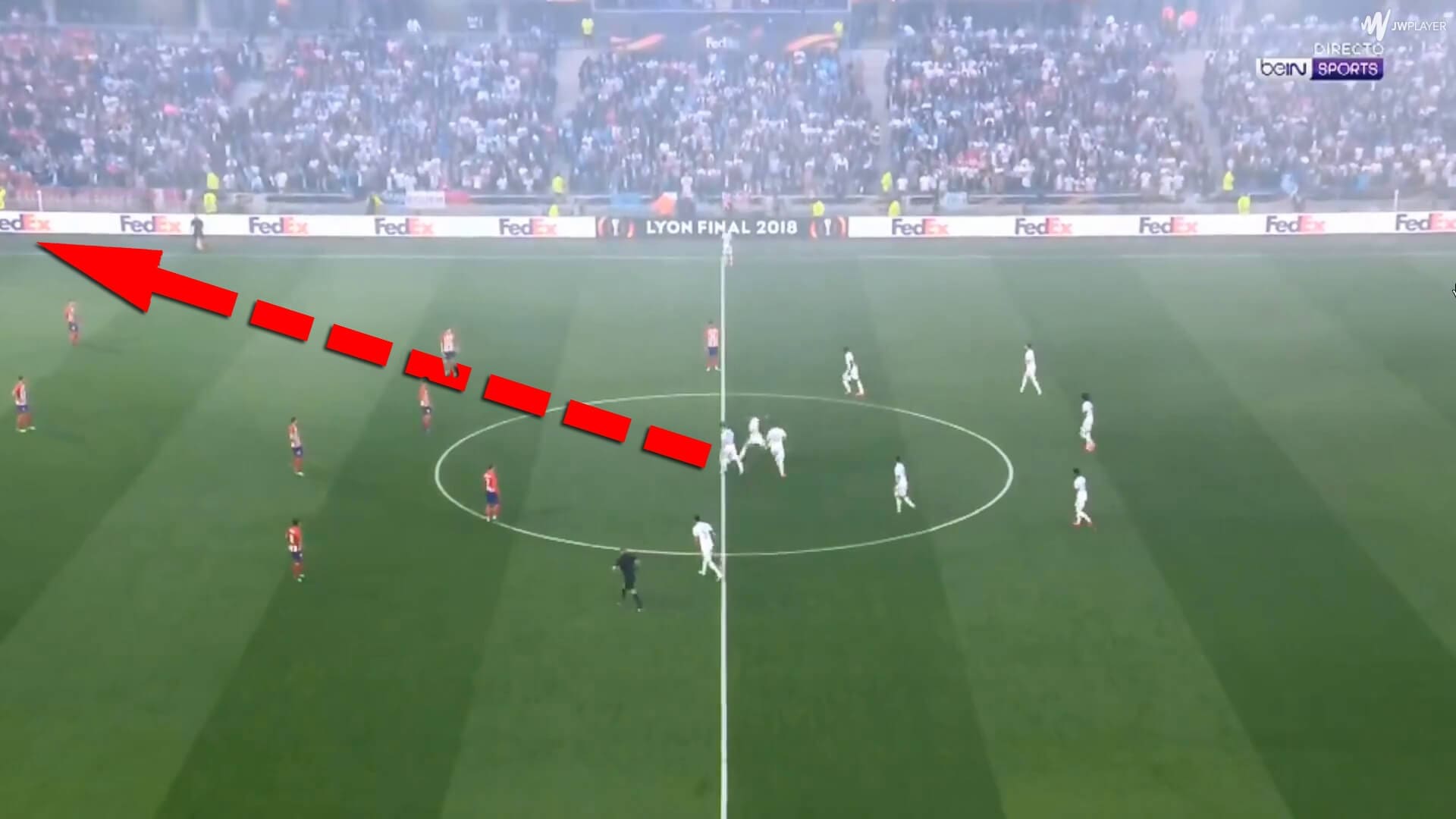
The main aim of this strategy is to keep the ball away from the own goal and to start pressing the opposition within their half. This strategy gives the location of the ball a higher priority than the team being in possession.
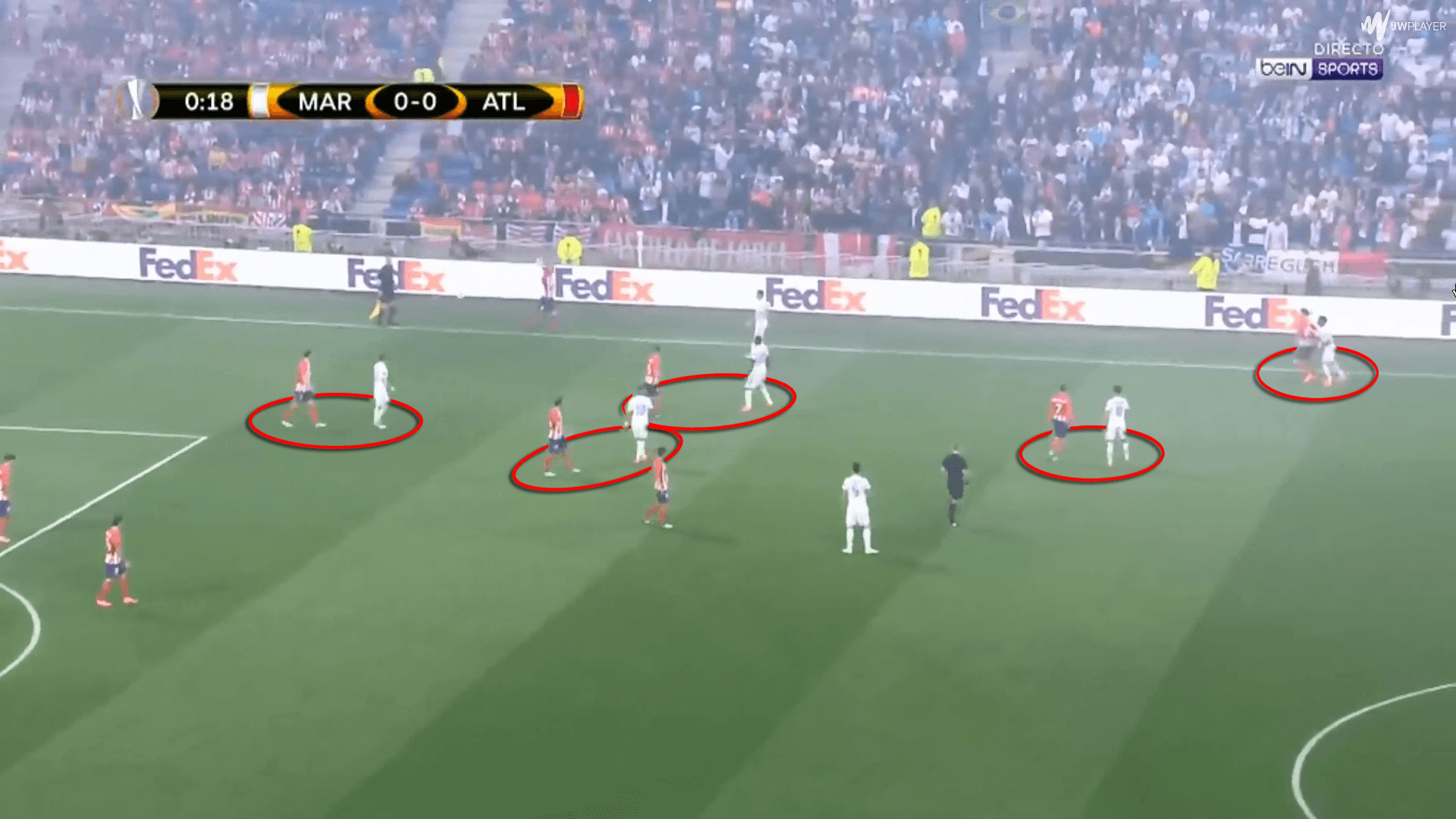
Conclusion
The kick-off is one of the most underestimated set-piece situations in football. Due to the specific moments a kick-off is executed, the psychological effect plays a key role.
There are endless kick-off strategies. Every team has to find their own kick-off strategy which fits their style of play. Nevertheless, especially in youth football, the kick-off should support an active style of play rather than just kicking the ball out to defend the following throw-in.
If you love tactical analysis, then you’ll love the digital magazines from totalfootballanalysis.com – a guaranteed 100+ pages of pure tactical analysis covering topics from the Premier League, Serie A, La Liga, Bundesliga and many, many more. Pre-order your copy of the April issue for just ₤4.99 here, or even better sign up for a ₤50 annual membership (12 monthly issues plus the annual review) right here.

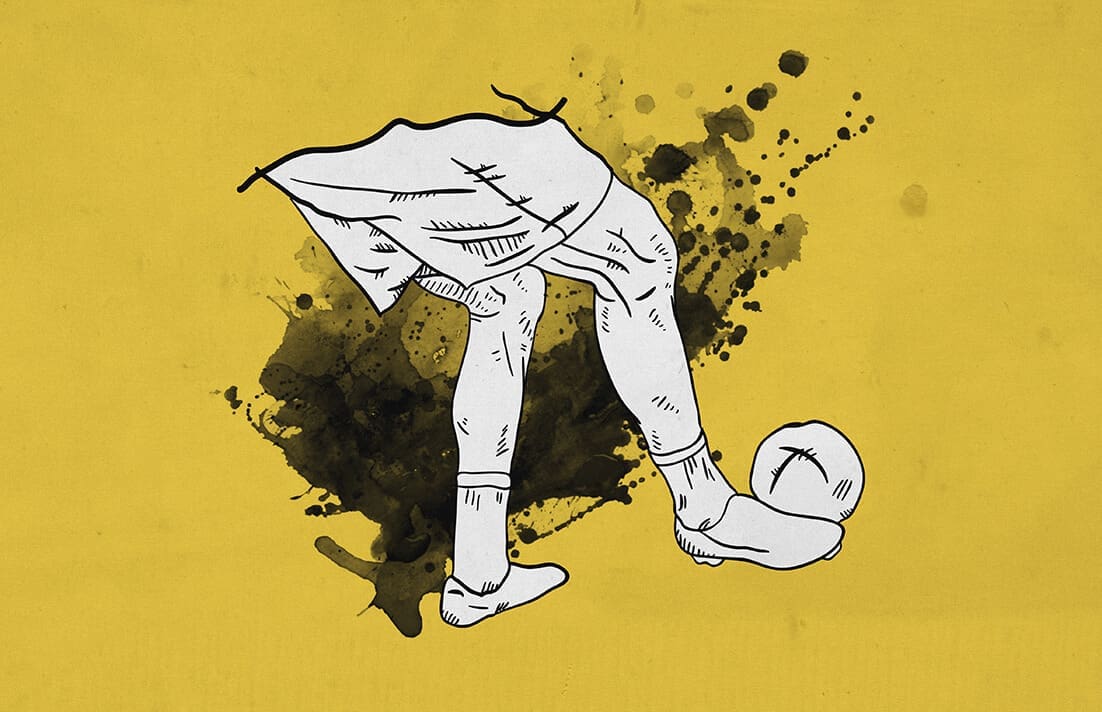



Comments